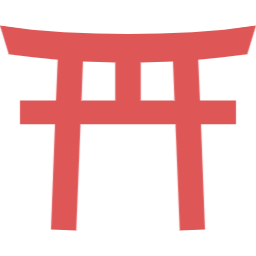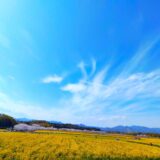目次
- 【Aoshima Shrine summary】
- 【Aoshima Shrine Yayoi Bridge】
- 【Aoshima Shrine road approaching a shrine】
- 【raised sea bed and peculiar wave-cut erosion(Devil’s Washboard)】
- 【Aoshima Shrine torii】
- 【Aoshima Shrine shrine gate】
- 【Aoshima Shrine Shrine building】
- 【Aoshima Shrine Motomiya Ancient Path of Prayer】
- 【Aoshima Shrine Motomiya】
- 【Aoshima Shrine throwing place】
- 【Aoshima Shrine Nearby attractions】
- 【Aoshima Shrine Access】
- Manager’s Comments
- Aoshima Shrine
【Aoshima Shrine summary】
The exact date of Aoshima Shrine’s construction is unknown, but it is believed that a religious complex was built during the Heian period (794-1185). Aoshima itself has long been revered as a sacred site, and the entire island was forbidden to visitors until the Edo period (1603-1868). According to shrine legend, the deity was enshrined at the site of a palace built by Hikohohodemi no Mikoto on his return from Watatsumi-no-Miya in the myth of the harvest of the mountains and the sea.
The deities enshrined at the shrine are Hikohohodemi no Mikoto, Toyotamahime no Mikoto, and Shiozutsu no Okami.
【Aoshima Shrine Yayoi Bridge】
![Aoshima Shrine [Miyazaki] DSC 2877 1024x768 - Aoshima Shrine [Miyazaki]](https://japan-shrine.info/wp-content/uploads/DSC_2877-1024x768.jpg)
The bridge to Aoshima was originally built in March 1920, when Emperor Showa visited the island as a Crown Prince, and was named “Yayoi Bridge” in honor of the month of March by Tamesamori Irie, the director of the Imperial Poetry Office at the time.
![Aoshima Shrine [Miyazaki] DSC 2855 1024x768 - Aoshima Shrine [Miyazaki]](https://japan-shrine.info/wp-content/uploads/DSC_2855-1024x768.jpg)
The original one was completely destroyed by a typhoon in 1940, and the current one was replaced in 1951.
Chiba has similar islands and topography, but Aoshima has a better atmosphere and is a more complete tourist destination.
![Aoshima Shrine [Miyazaki] DSC 1730 160x160 - Aoshima Shrine [Miyazaki]](https://japan-shrine.info/wp-content/uploads/DSC_1730-160x160.jpg) Okinoshima Uga-Daimyojin Shrine (Okinoshima Park) [Chiba]
Okinoshima Uga-Daimyojin Shrine (Okinoshima Park) [Chiba]
【Aoshima Shrine road approaching a shrine】
![Aoshima Shrine [Miyazaki] DSC 2857 1024x768 - Aoshima Shrine [Miyazaki]](https://japan-shrine.info/wp-content/uploads/DSC_2857-1024x768.jpg)
After crossing the Yayoi Bridge, an approach road appears on a white sandy beach. As you proceed along the approach, you will see devil’s washboard on both sides.
【raised sea bed and peculiar wave-cut erosion(Devil’s Washboard)】
The wave erosion platforms can be seen along the coast from around Aoshima Island to Irukamisaki Cape on the Nichinan Coast, and are also called “Devil’s Washboard” by locals because they appear at low tide and are uneven like a washboard used in the past for washing clothes.
![Aoshima Shrine [Miyazaki] DSC 2873 1024x768 - Aoshima Shrine [Miyazaki]](https://japan-shrine.info/wp-content/uploads/DSC_2873-1024x768.jpg)
The rock, which was under the sea surface long ago, emerged above the water surface due to geological changes, and was eroded by waves and sea water, resulting in its present shape. It is now a national natural monument.
【Aoshima Shrine torii】
After walking along the approach with a view of Devil’s Washboard, you will see a torii (gateway to the shrine).
![Aoshima Shrine [Miyazaki] DSC 2858 1024x768 - Aoshima Shrine [Miyazaki]](https://japan-shrine.info/wp-content/uploads/DSC_2858-1024x768.jpg)
This is the symbolic torii gate of Aoshima. Is it similar in shape to the torii seen at Sugawara Shrine and Kagoshima Shrine, or is it unique to southern Kyushu?
![Aoshima Shrine [Miyazaki] DSC 2736 160x160 - Aoshima Shrine [Miyazaki]](https://japan-shrine.info/wp-content/uploads/DSC_2736-160x160.jpg) Sugawara Shrine (Arahira Tenjin) [Kagoshima]
Sugawara Shrine (Arahira Tenjin) [Kagoshima]
【Aoshima Shrine shrine gate】
![Aoshima Shrine [Miyazaki] DSC 2861 1024x768 - Aoshima Shrine [Miyazaki]](https://japan-shrine.info/wp-content/uploads/DSC_2861-1024x768.jpg)
After passing through the torii gate, there is a magnificent shrine gate.
【Aoshima Shrine Shrine building】
![Aoshima Shrine [Miyazaki] DSC 2862 1024x768 - Aoshima Shrine [Miyazaki]](https://japan-shrine.info/wp-content/uploads/DSC_2862-1024x768.jpg)
The current shrine pavilion was rebuilt after it was destroyed by fire in 1974.
【Aoshima Shrine Motomiya Ancient Path of Prayer】
![Aoshima Shrine [Miyazaki] DSC 2871 1024x768 - Aoshima Shrine [Miyazaki]](https://japan-shrine.info/wp-content/uploads/DSC_2871-1024x768.jpg)
The approach to the Motomiya Shrine is a tunnel-like pathway made of ema hangings, a view unique to Aoshima Shrine amidst tropical trees.
【Aoshima Shrine Motomiya】
![Aoshima Shrine [Miyazaki] DSC 2868 1024x768 - Aoshima Shrine [Miyazaki]](https://japan-shrine.info/wp-content/uploads/DSC_2868-1024x768.jpg)
Passing through the “Ancient Way of Prayer,” one comes to the Yuan Palace. Located almost in the center of Qingdao, it was only open to priests and royalty until the 1960s, but is now open to the public.
【Aoshima Shrine throwing place】
![Aoshima Shrine [Miyazaki] DSC 2870 1024x767 - Aoshima Shrine [Miyazaki]](https://japan-shrine.info/wp-content/uploads/DSC_2870-1024x767.jpg)
Behind the main shrine, there is a place where the “Ten-no-Hiramawage” ritual, in which earthenware plates used for divination of good fortune and bad fortune are thrown, is performed. It is believed that if the unglazed cup is thrown into the rocky boundary at the back of the shrine, it will fulfill a person’s wish, and if it breaks, it will bring good luck and purify bad luck.
【Aoshima Shrine Nearby attractions】
Udo Jingu Shrine, Miyazaki Jingu Shrine
【Aoshima Shrine Access】
Manager’s Comments
I visited the shrine without prior knowledge, but the atmosphere and scenery were wonderful. The vermilion shrine pavilions, the blue sea, and the subtropical vegetation created a tropical atmosphere, and I was convinced that this was a standard honeymoon destination in the Showa period (1926-1989). It is one of Miyazaki’s representative spots and an indispensable sightseeing spot.
 Tour of Japanese shrines and temples
Tour of Japanese shrines and temples 

![Aoshima Shrine [Miyazaki] DSC 2831 520x300 - Aoshima Shrine [Miyazaki]](https://japan-shrine.info/wp-content/uploads/DSC_2831-520x300.jpg)
![Aoshima Shrine [Miyazaki] DSC 2887 520x300 - Aoshima Shrine [Miyazaki]](https://japan-shrine.info/wp-content/uploads/DSC_2887-520x300.jpg)
![Aoshima Shrine [Miyazaki] 17ff11f0e253870c48f9bc9117f974e7 - Aoshima Shrine [Miyazaki]](https://japan-shrine.info/wp-content/uploads/sng/17ff11f0e253870c48f9bc9117f974e7.jpg)
![Aoshima Shrine [Miyazaki] DSC 2887 150x150 - Aoshima Shrine [Miyazaki]](https://japan-shrine.info/wp-content/uploads/DSC_2887-150x150.jpg)
![Aoshima Shrine [Miyazaki] DSC 2831 150x150 - Aoshima Shrine [Miyazaki]](https://japan-shrine.info/wp-content/uploads/DSC_2831-150x150.jpg)
![Aoshima Shrine [Miyazaki] DSC 2905 2 150x150 - Aoshima Shrine [Miyazaki]](https://japan-shrine.info/wp-content/uploads/DSC_2905-2-150x150.jpg)
![Aoshima Shrine [Miyazaki] DSC 2627 150x150 - Aoshima Shrine [Miyazaki]](https://japan-shrine.info/wp-content/uploads/DSC_2627-150x150.jpg)

